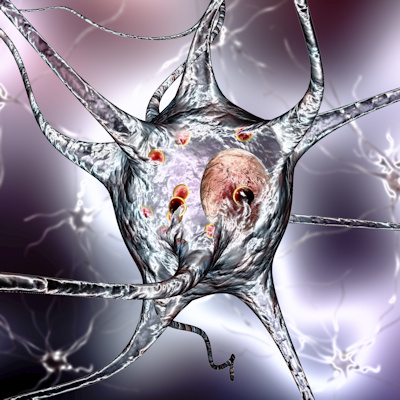April 12, 2023 -- A technique that identifies the build-up of abnormal protein deposits linked to Parkinson’s disease could aid in early diagnosis.
The research, published Wednesday in the Lancet Neurology, could play a key role in the treatment of this widespread movement disorder, according to the study investigators.
Identifying an effective biomarker for Parkinson's disease could have significant implications, potentially making it possible to identify the best treatments for different patient subsets, and hasten clinical trials. The presence of misfolded α-synuclein protein aggregates in the brain, a hallmark of Parkinson's disease, could potentially serve as a biomarker. Historically, biochemical tests could not provide a conclusive diagnosis during life -- therefore, the disease has previously been defined based on clinical symptoms and post-mortem brain pathology.
A technique called α-synuclein seed amplification assay (αSyn-SAA) amplifies very small amounts of misfolded α-synuclein aggregates in samples from Parkinson's patients so that they can be detected using standard laboratory techniques. The researchers sought to assess αSyn-SAA's usefulness in detecting early signs of Parkinson's.
The researchers used data from the Parkinson's Progression Markers Initiative cohort. Among the 1,123 participants were individuals with a Parkinson's disease diagnosis, and at-risk people with gene variants linked to the condition. Samples of participants' cerebrospinal fluid, which surrounds the brain and spinal cord, were analyzed using αSyn-SAA.
Prodromal individuals exhibit non-motor symptoms, including REM sleep disturbance and loss of smell -- both potential Parkinson's precursors -- but lack the tremors or muscle stiffness that come later in the disease's development. Prodromal participants were included to help determine αSyn-SAA's usefulness in predicting Parkinson's onset.
Findings confirmed that αSyn-SAA can accurately detect people with Parkinson's disease, with positive results in 88% of diagnosed participants. Most prodromal participants had positive αSyn-SAA results, indicating α-synuclein aggregates, despite not having been diagnosed with Parkinson's disease. Among those recruited with sleep disorder, 85% had positive αSyn-SAA results. Similarly, among those reporting loss of smell, 89% had positive αSyn-SAA results. Such loss of smell was the clinical feature that most strongly predicted a positive αSyn-SAA result. Among participants with Parkinson's disease and loss of smell, 97% had positive αSyn-SAA results compared to 63% of those whose sense of smell was unchanged.
Importantly, most prodromal participants with positive αSyn-SAA results had brain scans that did not show a decline in the number of dopamine-producing nerve cells, a pre-diagnosis biomarker. The loss of dopamine-producing cells has been implicated as a cause of Parkinson's disease. This result suggests that misfolded α-synuclein buildup may be a very early indicator of disease onset. That the detection of α-synuclein before brain damage is observable by imaging suggests the ubiquitous spread of these proteins prior to substantial neuronal damage.
"Our findings suggest that the αSyn-SAA technique is highly accurate at detecting the biomarker for Parkinson's disease regardless of the clinical features, making it possible to accurately diagnose the disease at early stages," co-lead author Luis Concha, director of R&D for the biotech company Amprion, said in a statement.
Copyright © 2023 scienceboard.net









